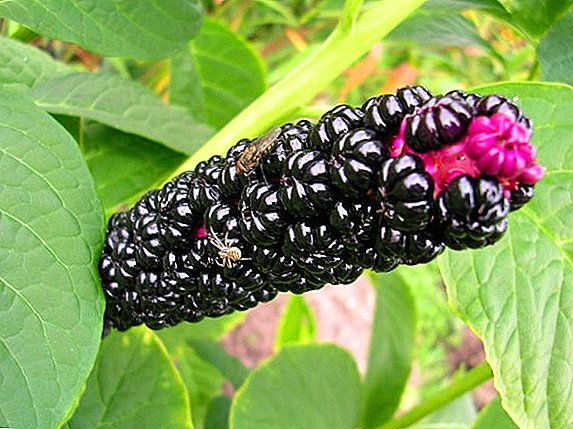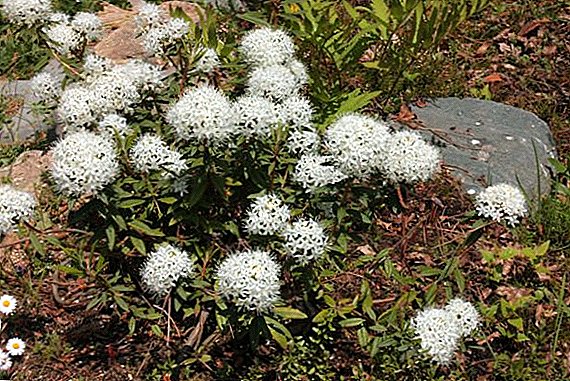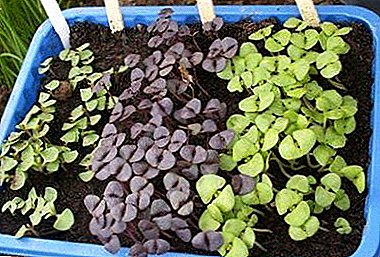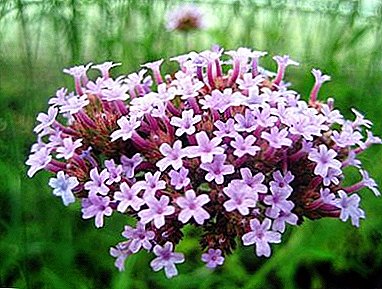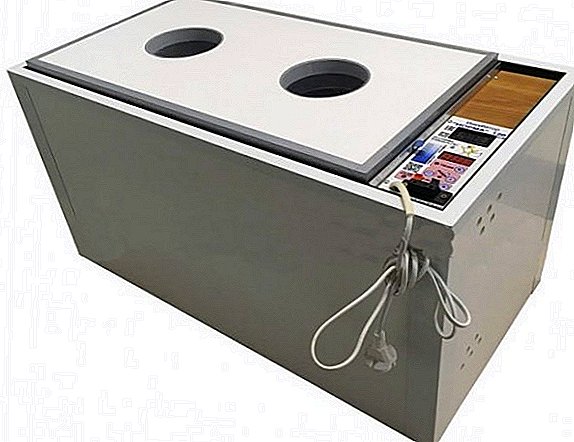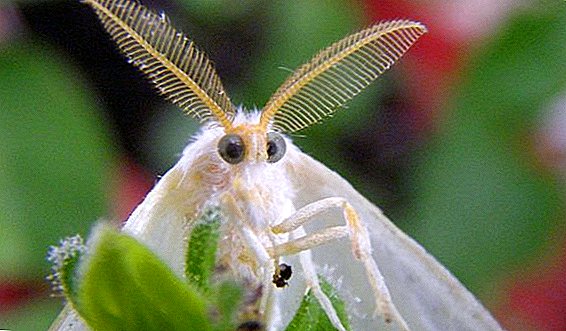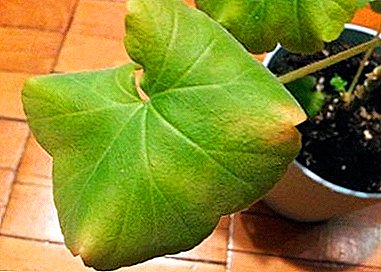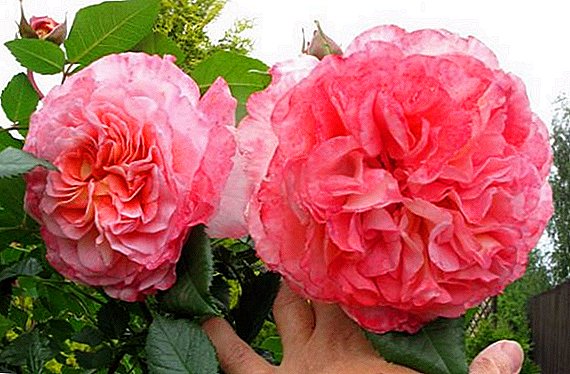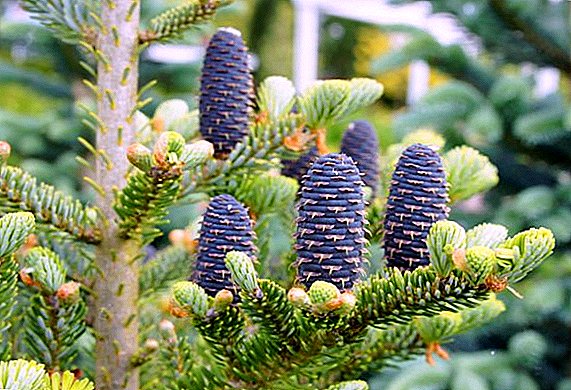 Fir is a coniferous evergreen with a conical crown. The crown of the fir starts from the stem. In adult trees, the top of the crown is rounded or notched.
Fir is a coniferous evergreen with a conical crown. The crown of the fir starts from the stem. In adult trees, the top of the crown is rounded or notched.
The color of the periderm is gray, it is not wrinkled in most species of fir. The periderm of mature trees becomes thicker and cracks over time. Some species of garden fir have needles of green-gray or green-blue color. The needles of most trees are flat, dark green in color with milk stripes below.
Fir has a pleasant coniferous smell. There are about forty species of fir, but not all of them are suitable for landscape gardening design, since individual plants grow to sixty meters. Cones are located at the top of the crown. The development of cones takes decades. Fir cones fall to the ground with stiffened parts. The fir root is strong.
There are firs with decorative cones, these include the following species: Korean fir, Wichi fir, monochrome fir, Fraser fir, Siberian fir. Fir is divided into species, which, in turn, have a variety of varieties. Below are the most popular and common varieties of fir.
Did you know? A distinctive feature of fir plants is the location of the resin passages in the periderm, and not wood.
Balsam fir
The homeland of balsam fir is North America and Canada. The top of the tree is symmetrical, dense, and pinned, low. Plant height - from 15 to 25 meters. With age, the periderm changes its color from ash-gray to red-brown, and shoots from ruby to red-brown. Branches are placed ring-shaped in tiers. The needles are shiny, poisonous green, with a pronounced balsamic smell, small cones of lilac color.  Cones cylindrical, up to ten centimeters. This species of fir is shade tolerant, frost-resistant and fast-growing. The branches of the lower tier well take root. Balsam fir is represented by several ornamental garden forms such as Nana and Hudsonia.
Cones cylindrical, up to ten centimeters. This species of fir is shade tolerant, frost-resistant and fast-growing. The branches of the lower tier well take root. Balsam fir is represented by several ornamental garden forms such as Nana and Hudsonia.
Such evergreen trees and shrubs like spruce, honeysuckle, cypress, juniper, boxwood, pine, thuja, yew will be an excellent decoration for the dacha.
 Balsam fir variety Nana is a slow-growing plant in the form of a dwarf shrub. The bush is down-to-earth, pillow-shaped, the height does not exceed fifty centimeters, and the diameter is eighty centimeters. The needles of the bush are short, ruby-colored, heavily knocked down, pleasantly smelling. Nana is winter-hardy, but does not tolerate high temperatures and droughts.
Balsam fir variety Nana is a slow-growing plant in the form of a dwarf shrub. The bush is down-to-earth, pillow-shaped, the height does not exceed fifty centimeters, and the diameter is eighty centimeters. The needles of the bush are short, ruby-colored, heavily knocked down, pleasantly smelling. Nana is winter-hardy, but does not tolerate high temperatures and droughts.Fir monochrome
The homeland of the monochrome fir is the mountainous regions of the USA and northern Mexico. Trees grow up to sixty meters. The crown is wide conic. Periderm dense, light gray color with oblong cracks. The needles of monochrome fir is the largest among the other species, its length is about six centimeters.  The color of the needles is gray-green matt on all sides, they are soft and have a pleasant lemon scent. The cones are dark purple in color, their length reaches 12 cm, the shape is oval-cylindrical. Monochrome fir is a fast-growing tree, resistant to winds, smoke, droughts and frost. Lives about 350 years. Fir monochrome has several decorative forms, among them popular varieties such as Violacea and Compact.
The color of the needles is gray-green matt on all sides, they are soft and have a pleasant lemon scent. The cones are dark purple in color, their length reaches 12 cm, the shape is oval-cylindrical. Monochrome fir is a fast-growing tree, resistant to winds, smoke, droughts and frost. Lives about 350 years. Fir monochrome has several decorative forms, among them popular varieties such as Violacea and Compact.
Violacea - purple monochrome fir. The crown of the tree is wide, conical, the height does not exceed eight meters. Needles oblong, white and blue. This form of fir is rarely found in ornamental plantings.  Campakta is a dwarf, slow-growing shrub with randomly placed branches. The length of the needles reaches forty centimeters, the color is blue. Just like Violaceu, it can be met very rarely.
Campakta is a dwarf, slow-growing shrub with randomly placed branches. The length of the needles reaches forty centimeters, the color is blue. Just like Violaceu, it can be met very rarely.
Important! Fir needles change every few years and does not rust, which makes it attractive for use in landscape design.
Kefallin fir (Greek)
Kefalli fir lives in the south of Albania and in Greece, in the mountains at an altitude of up to two thousand meters above sea level. In height, the plant grows to 35 meters, the diameter of the trunk reaches two meters. Crown is thick, tapered, low. The periderm becomes cracked over time. The young growth is naked, feels as polished, shiny, bright brown or red-brown in color. Kidney cone-shaped, tarry red-lilac color.  Needles up to 3.5 cm in length and a width of not more than three millimeters. The tops of the needles are sharp, the needles themselves are shiny and thick, dark green above and pale green below. The needles are arranged in spiral form, closely to each other. Cones narrow, cylinder-like, tar, large. First, the bumps are lilac-colored, and as they mature, they turn brown-purple. Greek fir is drought-resistant, growing slowly, afraid of cold winters.
Needles up to 3.5 cm in length and a width of not more than three millimeters. The tops of the needles are sharp, the needles themselves are shiny and thick, dark green above and pale green below. The needles are arranged in spiral form, closely to each other. Cones narrow, cylinder-like, tar, large. First, the bumps are lilac-colored, and as they mature, they turn brown-purple. Greek fir is drought-resistant, growing slowly, afraid of cold winters.
White Fir (Manchu Black)
The homeland of whole-leafed fir is south of Primorye, North China and Korea. The tree grows up to 45 meters. The crown is thick, wide pyramidal, loose, lowered to the ground. A distinctive feature of this type of fir is the color of the bark - first it is dark gray and then black. In young saplings, the periderm is yellow-gray in color. Needles tight, tough, sharp, solid. The top of the needles of dark green color is shiny, and the bottom is lighter.  The needles are arranged on the branches in waves. Black Manchurian fir changes needles every nine years. Cones of a cylindrical shape, light brown color, tar, velvet-pubescent. The first ten years of life grows slowly, and then the growth is rapidly increasing. The lifetime of a tree is 400 years. The tree is winter-hardy, shade-tolerant, wind-resistant, requires high soil moisture and the environment.
The needles are arranged on the branches in waves. Black Manchurian fir changes needles every nine years. Cones of a cylindrical shape, light brown color, tar, velvet-pubescent. The first ten years of life grows slowly, and then the growth is rapidly increasing. The lifetime of a tree is 400 years. The tree is winter-hardy, shade-tolerant, wind-resistant, requires high soil moisture and the environment.
Nordmann fir (Caucasian)
The homeland of the Caucasian fir is the western Caucasus and Turkey. Nordmann fir grows up to 60 meters in height, trunk diameter - up to two meters. Crown of a narrow cone-shaped, densely branched. Young plantings have a brilliant light brown or yellow color periderm, which eventually turns gray. Juveniles are shiny red-brown and then white-gray. Needles are dark green, dense, the bottom of silver needles. You can rarely meet the Caucasian fir, because the tree has a low winter hardiness. There are several varieties of fir for decorative cultivation: Pendula Aurea, Gtauka, Albo-Spekata.
Needles are dark green, dense, the bottom of silver needles. You can rarely meet the Caucasian fir, because the tree has a low winter hardiness. There are several varieties of fir for decorative cultivation: Pendula Aurea, Gtauka, Albo-Spekata. 
Did you know? The life span of Nordmann fir is five hundred years.
Sakhalin fir
Sakhalin fir native to Sakhalin and Japan. The plant is highly decorative, up to thirty meters in height, has a smooth periderm of dark steel color, which grows darker as it grows. The diameter of the seedling does not exceed one meter. Branches shirokokonicheskaya dense top slightly curved upward.  Needles are soft, dark green in color, with milk strips below. The length of the needles reaches four centimeters, the width is no more than two millimeters. Cones are placed vertically, the shape is cylindrical. The color of the cones is brown or black-blue, length 8 cm, diameter 3 cm. The plant is frost-resistant, shade-tolerant, requires the content of increased moisture in the air and soil.
Needles are soft, dark green in color, with milk strips below. The length of the needles reaches four centimeters, the width is no more than two millimeters. Cones are placed vertically, the shape is cylindrical. The color of the cones is brown or black-blue, length 8 cm, diameter 3 cm. The plant is frost-resistant, shade-tolerant, requires the content of increased moisture in the air and soil.
Subalpine fir (mountain)
Mountain fir native to the high mountains of North America. The height does not exceed 40 meters, the trunk is 60 cm in diameter. The tops of the trees are short, narrowly conical. Subalpine fir has a smooth, covered with small cracks periderm gray color. The top of the needles is matte grass blue, and the bottom has two white stripes. The needles fasten in two rows. Subalpine fir has cylindrical cones, ripening occurs annually in late August. There are types of mountain fir, suitable for decorative cultivation.  Argentea - mountain fir with silver needles. Glauka is a subalpine fir up to 12 meters high, with a pyramid-shaped crown and oblong steel or blue needles. Compact - fir dwarf form not more than one and a half meters in height with a wide, well-branched crown. Needles silver-heavenly color, with bluish stripes at the bottom. The shape of the needles is similar to a sickle, length 3 cm. The needles are tight. Low-growing varieties are widely distributed among amateur gardeners.
Argentea - mountain fir with silver needles. Glauka is a subalpine fir up to 12 meters high, with a pyramid-shaped crown and oblong steel or blue needles. Compact - fir dwarf form not more than one and a half meters in height with a wide, well-branched crown. Needles silver-heavenly color, with bluish stripes at the bottom. The shape of the needles is similar to a sickle, length 3 cm. The needles are tight. Low-growing varieties are widely distributed among amateur gardeners. 
Important! Young fir seedlings for the winter must be covered, because they are afraid of spring frosts.
Korean fir
It grows in mountain ranges from one hundred to 1850 meters above sea level in the south of the Korean Peninsula and Jeju Island. Discovered this species of fir in 1907. The seedling does not grow above 15 meters. Juveniles first yellow and then red color, covered with thin villi. The needles are short, the top is shiny dark green in color, the bottom is white. Cones beautiful bright blue with a purple tint color. Korean fir is growing slowly, winter-hardy.  Korean fir varieties such as Blue Standard are widespread - tall trees with cones of dark lilac color; Brevifolia - a tree with a rounded crown, marsh-green at the top and gray-white needles at the bottom, small purple cones; Silberzverg is a low, slow-growing variety of fir with silver-colored needles, a rounded crown and short, densely branching branches; Piccolo is a shrub about thirty centimeters high, reaching a diameter of up to one and a half meters with a flat spreading crown, needles of a dark grass color.
Korean fir varieties such as Blue Standard are widespread - tall trees with cones of dark lilac color; Brevifolia - a tree with a rounded crown, marsh-green at the top and gray-white needles at the bottom, small purple cones; Silberzverg is a low, slow-growing variety of fir with silver-colored needles, a rounded crown and short, densely branching branches; Piccolo is a shrub about thirty centimeters high, reaching a diameter of up to one and a half meters with a flat spreading crown, needles of a dark grass color.
Fir high (noble)
Fir high reaches a height of 100 meters. The homeland of the noble fir is the western part of North America. Growth area - river valleys and gentle slopes near the ocean. This is practically the highest species of fir. It has a cone-shaped crown when the seedlings are young, and with age of the seedling the crown will become dome-shaped. Juveniles have gray-brown smooth periderm, and older seedlings have dark brown, covered with oblong cracks periderm. 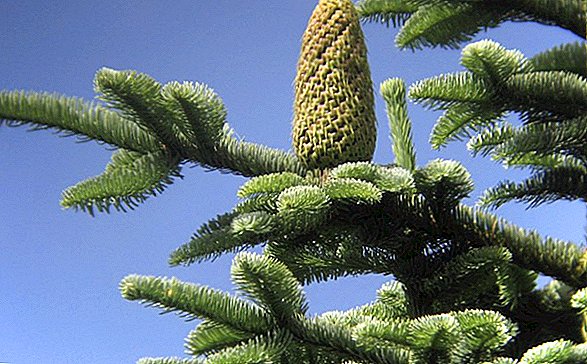 Young branches of olive-green or red-brown shade, in a gun. Older branches exposed. Needles are small, curved at the base. The top of the needles are brilliant green and the bottom is gray. The shape of the cones is oblong-cylindrical, length up to 12 cm, diameter 4 cm. Not mature cones of emerald or red-brown color, but matured dark brown-gray tar. The life span of the noble fir is about 250 years. Sapling grows quickly.
Young branches of olive-green or red-brown shade, in a gun. Older branches exposed. Needles are small, curved at the base. The top of the needles are brilliant green and the bottom is gray. The shape of the cones is oblong-cylindrical, length up to 12 cm, diameter 4 cm. Not mature cones of emerald or red-brown color, but matured dark brown-gray tar. The life span of the noble fir is about 250 years. Sapling grows quickly.
Did you know? Periderm, needles and buds of fir are used to make medicinal preparations. They contain essential oils and tannins.
Fir Wicha
The homeland of fir is Central Japan, its habitat is mountains. The height is about forty meters. The branches of the plant are short, perpendicular to the trunk, the crown is pyramid-shaped. The trunk is covered with a smooth periderm of a white-gray color. Young growths are covered with pubescent periderm of gray or emerald color.  The needles are soft, slightly curved, not more than 2.5 cm. The top of the needles is shiny dark green, the bottom is decorated with milk stripes. The length of the cones is about 7 cm. Immature cones of red-bluish-purple color with time acquire a chestnut color. The plant is winter-hardy, fast-growing, resistant to smoke.
The needles are soft, slightly curved, not more than 2.5 cm. The top of the needles is shiny dark green, the bottom is decorated with milk stripes. The length of the cones is about 7 cm. Immature cones of red-bluish-purple color with time acquire a chestnut color. The plant is winter-hardy, fast-growing, resistant to smoke.
Firara Fir
The birthplace of this species of fir is North America. The height of the tree is 25 meters, the crown is pyramid-shaped or conical. The young trunk of the fir is covered with periderm gray, and the old trunk is red with branches of yellow-gray. The needles are short, shiny dark green above and silvery below. Cones are short decorative, mature purple-brown color.  The plant is winter-hardy, but does not tolerate air pollution. Frasera fir is used for landscaping parks, forest parks and suburban areas. There is a shrub with a perpendicular arrangement of branches - Fraser's fir is prostrate.
The plant is winter-hardy, but does not tolerate air pollution. Frasera fir is used for landscaping parks, forest parks and suburban areas. There is a shrub with a perpendicular arrangement of branches - Fraser's fir is prostrate.
Siberian fir
The homeland of the Siberian fir is Siberia. In gardening is rare. Plant height does not exceed thirty meters. The top of the head is narrow, cone-shaped. The branches are thin, lowered to the ground. The periderm at the bottom of the trunk is cracked, at the top is not rough, dark gray. Shoots covered with thick pile. Needles are soft, narrow and blunt at the end, up to three centimeters in length.
Fir is also used as a free-growing hedge. For the formation of a living fence is well suited: magonia, larch, juniper, hawthorn, barberry, rhododendron, lilac, rosehip, cotoneaster, yellow acacia.
 The color of the needles is dark green shiny at the top and two parallel milk strips at the bottom. Siberian fir changes its needles once in 11 years. Cones are upright, cylindrical, initially light brown or light purple, and then light brown color. The plant is winter-hardy, shade-tolerant. There is a Siberian blue, white, motley. They differ only in color needles.
The color of the needles is dark green shiny at the top and two parallel milk strips at the bottom. Siberian fir changes its needles once in 11 years. Cones are upright, cylindrical, initially light brown or light purple, and then light brown color. The plant is winter-hardy, shade-tolerant. There is a Siberian blue, white, motley. They differ only in color needles.
Important! Fir cannot be planted in absolute shade, since its crown is fully formed only with sufficient illumination.
White Fir (European)
White fir is a plant that grows up to 65 meters with a trunk diameter of up to one and a half meters. The top of the plant is cone-shaped. Periderm is white-gray with a red tint of color. The young of the European fir green or light chestnut color, with time become gray-chestnut. The needles are dark green, silvery below. The homeland of the European fir is the countries of Central and Southern Europe. The tree grows slowly, does not like windy areas. 
Fir myra
Originally from Japan. Outwardly, Mira fir is similar to Sakhalin. Height varies from 25 to 35 meters. The top of the tree is a dull conical. With age, periderm turns from non-rough sulfur into rough with transverse bar-like rings. Needles are small and narrow, have an emerald color. The cones are arranged vertically in groups of red-brown color. The birthplace of myra fir is the southwest of Hokkaido. Fir is hardy, shade-tolerant, grown in parks and forest parks.


